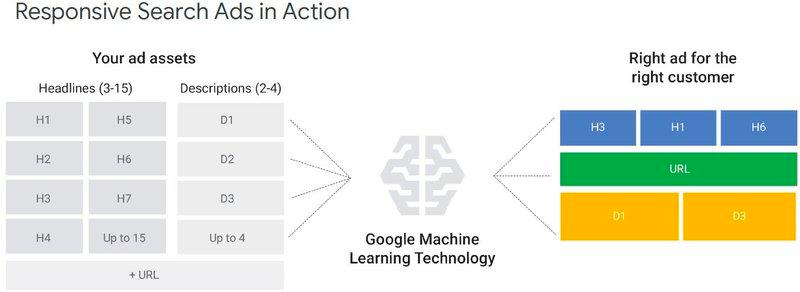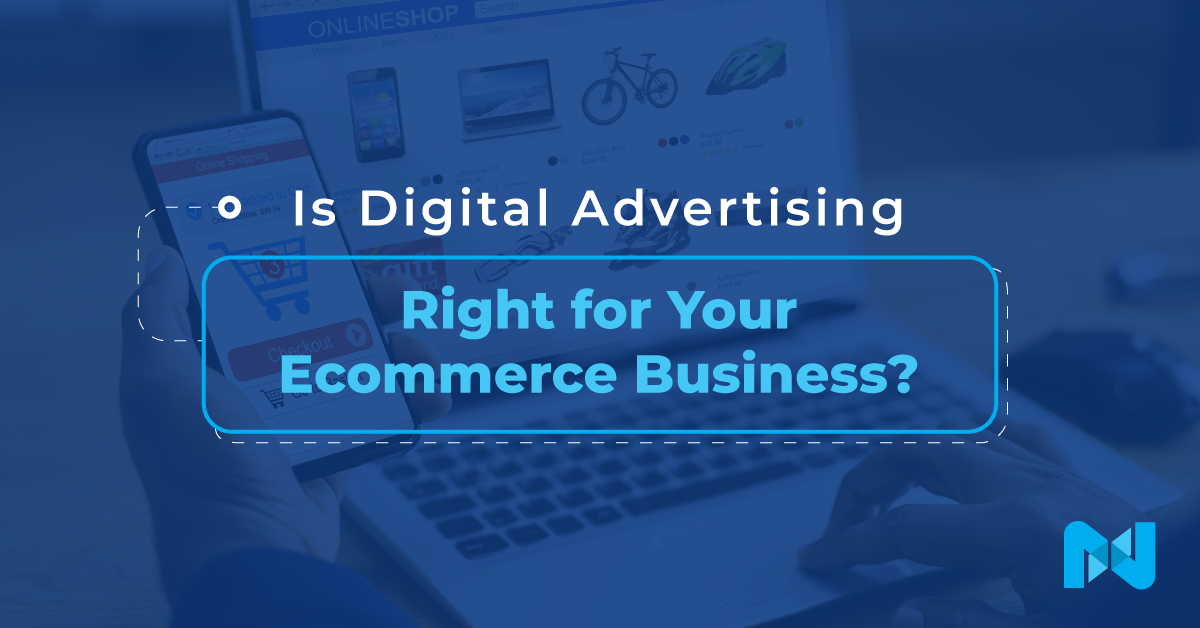Although ecommerce has enjoyed increasing popularity over the past few years, the 2020 pandemic has forced businesses to adopt this trend in order to survive. Some online companies were prepared and have thrived during this time, while others merely got by.
To ensure longevity and success in the ecommerce space, the next step for businesses is to adopt an ecommerce strategy for marketing. Digital advertising — specifically, ecommerce ads — should be included to achieve speedy growth.
In this article, you’ll learn:
- What ecommerce ads are.
- Why you should use digital advertising in ecommerce.
- Best strategies for ecommerce ads.
Ecommerce Ads
Ecommerce advertising is a subset of ecommerce marketing that focuses on putting paid content on both online and offline platforms.
Online platforms for ecommerce ads include websites, search engines, social media, email newsletters, and messaging apps. Offline platforms include traditional advertising such as TV, radio, and billboard.
Businesses must adopt a mix of both forms of advertising to achieve their different goals: increase ecommerce sales, raise brand awareness, and attract customers to their ecommerce store.
For this guide, we’ll be focusing on digital advertising for online platforms.
Why Use Ecommerce Ads
Here are a few reasons why you should include digital advertising in your ecommerce marketing strategy.
Ecommerce Ads Empower You To Reach Your Ideal Customers
Besides letting you track campaign metrics, ecommerce ads empower you to target ideal customers. Setting up social and PPC ads lets you define demographic attributes such as age, gender, or interests. Audiences that fit into these criteria will be shown your ads.
Ecommerce Ads Are Trackable
Ecommerce ads have tracking systems that let you check how your digital advertising campaigns are performing.
All types of digital ads, including social or PPC ads, measure metrics such as impressions, clicks, or conversions. With the help of ecommerce analytics tools, tracking results from your ad campaigns can lead to improvements.
Ecommerce Ads Are Budget-Friendly
Ecommerce ads enable small businesses to compete with larger companies.
Traditional advertising is usually too expensive for small businesses, but digital advertising methods, such as pay-per-click (PPC) advertising, empower you to choose the budget for your campaign.
Types of Digital Advertising
The three main types of digital advertising include:
- Display ads
- Pay-per-click (PPC) search ads
- Social ads
Display Ads
Display ads are the most basic and straightforward type of digital ads. They can appear as static images or videos with a call-to-action (CTA) in landing pages or website sidebars. Banner ads and pop-up ads are other forms of display ads.
Display ads are useful for reaching new customers since they don’t allow you to specifically target an audience. And because functions are limited, they are also the most cost-effective.
Display ads are run by digital advertising platforms such as Google Display Network (GDN) and Adobe Marketing Cloud.
Pay-Per-Click Search Ads
Pay-per-click (PPC) ads are used to drive traffic to websites. Advertisers pay publishers each time an ad is clicked to gain an advantage in search results.
Ecommerce PPC ads are especially effective because when potential customers click on an ad, they are directed to the product page, allowing them to checkout immediately (e.g., Google Shopping Ads). In search results, 46% of page clicks go to the top PPC ads.
PPC ads enable you to target audiences. They are also cost-effective as you only pay any time someone clicks your ad. Google Ads is the most popular platform for PPC ads.
Social Ads
In a nutshell, social media ads (or social ads) are advertisements shown to users on social platforms. Because there are so many social networks, social ads are versatile.
As with PPC ads, social ads empower you to target people and segment specific audiences. But because the social platforms have different audiences, social ads force marketers to be creative because ads have to be tailored to different types of content.
There are two types of social ads: organic and paid social media ads. The latter is measurable and can give you fast results, while the former, which involves influencer marketing, requires more patience and authenticity in the ad copy.
Facebook ad campaigns are the most popular because of its large user base, but don't count out other social networks, such as YouTube, Instagram, or Twitter.
Best Strategies for Ecommerce Ads
By 2040, 95% of purchases are expected to be done via ecommerce businesses. To ensure that your business makes it to 2040 (or even next year), you have to continue to adapt. Start by using these strategies for ecommerce ads.
Apply Personalization
Personalization is the practice of creating personal experiences for customers on ecommerce websites.
Personalization involves generating dynamic content or recommendations based on:
- Browsing behavior
- Purchase history
- Demographic and geographic data
All of the above can easily be applied in digital advertising.
The benefits of including personalization in your ecommerce advertising strategy are:
- Decreased acquisition costs
- Increased revenue
- Increased return on investment (ROI)
- More brand loyalty
Leverage Artificial Intelligence
Artificial intelligence (AI) is more commonly used in automation, but thanks to new technologies, AI can help power personalization as well.
An example where AI is used in ecommerce ads is Google’s responsive search ads. Google uses AI to test different combinations of headlines and copy to determine which performs best, which has led to 15% higher clickthrough rates.

Use Retargeting Ads
Retargeting ads are used to remind customers of your products and services after leaving your ecommerce website without completing a purchase.
With an estimated 3.8 billion social media users worldwide that spend an average of 145 minutes on social media per day, social media is a helpful tool to drive purchasing via retargeting ecommerce ads.
Implement A/B Testing
Another goal of ecommerce businesses is conversion rate optimization, or maximizing the number of website visitors that purchase. This can be done through A/B testing to determine which ecommerce ads perform best.
Final Thoughts: Ecommerce Ads: How to Succeed in Digital Advertising
To succeed post-pandemic, digital advertising should be a non-negotiable in an online store’s ecommerce marketing strategy. With these best practices, setting up successful ecommerce ads will be a breeze.
Ready to start your ecommerce store? Check out fully managed WooCommerce hosting from Nexcess to get started today.

